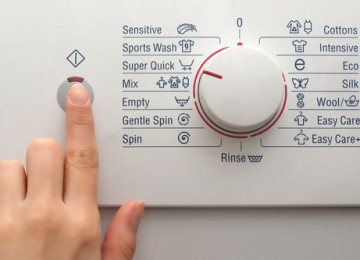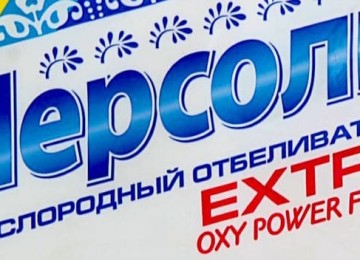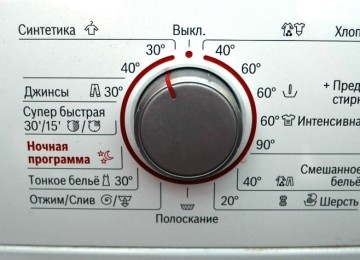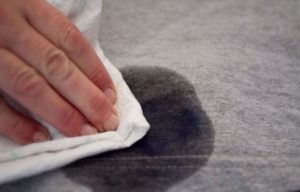 From greasy stains on clothes No one is immune: you can get dirty while eating, cooking or repairing washing mashines. Fuel oil or oil is washed very poorly, because fat consists of non-polar molecules that do not bond with water molecules. Despite this, there are several proven methods for removing oil stains, which we will consider further.
From greasy stains on clothes No one is immune: you can get dirty while eating, cooking or repairing washing mashines. Fuel oil or oil is washed very poorly, because fat consists of non-polar molecules that do not bond with water molecules. Despite this, there are several proven methods for removing oil stains, which we will consider further.
How to remove a fresh stain
It is much easier to remove a fresh stain than an old one. The sooner you start cleaning, the easier it is to remove the dirt. Fresh stains can be dealt with at home in the following ways:
- Medical absorbent preparations in powder or tablets. You can use Atoxil, Sorbex or Activated carbon. All these products are absorbents. You need to crush the tablets into powder and sprinkle them on top of the oil stain. Leave for 1-2 hours, after which rinse the item. If you are unable to completely remove the stain the first time, you can try again to get rid of it using washing soap.
- The shampoo has degreasing properties, so it effectively removes oil stains on fabric. A small amount should be applied to the fabric, lathered, left to act for 5 minutes and rinsed under clean running water. In order to completely eliminate contamination, the procedure can be repeated.
- Laundry soap 72% consists of alkali and fatty acids, due to which it has a degreasing property. It can be used to remove all types of contaminants on any products. It is used for leather, suede, nubuck and all types of textiles.

As the long-term practice of housewives shows, one of the most effective means for combating greasy stains on fabric is dishwashing gel. It contains substances whose action is aimed at breaking down fat and oil molecules. If a stain from vegetable or animal oil appears on clothing, immediately apply dishwashing detergent and rub for several minutes, then rinse in cold water.
How to remove old stains from fabric
Old stains are more difficult to remove than fresh ones. When fat eats in and hardens/dries out, it is difficult to wash off, but possible. Practical tips for removing grease stains:
- Ammonia can be purchased at a pharmacy. This is an indispensable product in the household: it can be used to clean plumbing fixtures and tiles, remove oil traces from clothes, towels, walls, etc., it helps in the fight against mold. To remove fat from fabric, you need to apply ammonia for 30 minutes, then wash it by hand using laundry soap (72%)
- Solvent Stoddard (White Spirit) is a gasoline solvent based on aliphatic hydrocarbons, which is used to remove grease and paint stains.It must be carefully applied to the dirty area and left for 10 minutes, after which hand washing is recommended to thoroughly remove the dirt and eliminate the unpleasant odor of white spirit.
- Petrol although it has an unpleasant smell, but it helps to cope not only with greasy stains, but also to eliminate yellow stains from sweat. You need to apply it to the stained area and hold it for 15 minutes, then wash the product in the usual way.
- Glycerol - a cheap remedy from the pharmacy. It quickly and effectively removes stains and shine on the jacket (often a greasy shine appears on the raincoat fabric on the sleeves and collar). To do this, apply glycerin to the stains with a sponge and leave for 30-40 minutes. During this time, it will dissolve the stubborn fat, after which the item must be rubbed by hand and thrown into the machine.
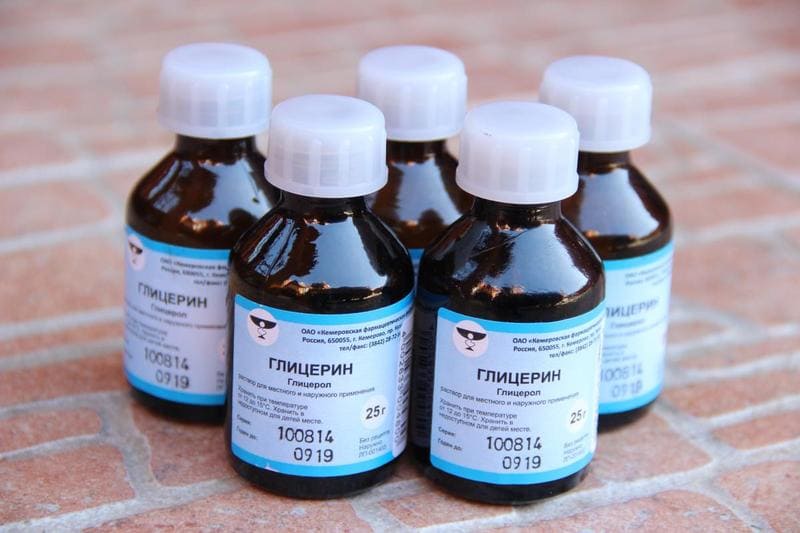
Oil and fat are organic matter that dissolves under high temperature. Therefore, you need to wash clothes in hot water. It is important to look at the maximum permissible mode on the tag before doing this, so as not to spoil the item.
If you can’t remove the stains on jeans or other clothes yourself, you can take them to a dry cleaner, where specialists wash items with special chemical compounds.
Removing stains from different fabrics
The methods described above all work, but it should be borne in mind that they cannot always be used due to the risk of fabric damage. For example, turpentine or white spirit can ruin the print on synthetics, and activated carbon can ruin the print on light natural fabrics.Therefore, before using this or that product against oil stains, you need to pay attention to the quality of the fabric so as not to spoil it:
- Silk fabric It is quite delicate and thin, so it can be damaged by aggressive solvents. To remove greasy stains on silk, you can use talc or baby powder. It, like soda or salt, absorbs fat, freeing the tissue from it. Leave for 15 minutes to take effect. This method allows you to remove stains from cosmetics - oils, creams, ointments and food fats.
- On knitted pants You can remove the stain using a starch mixture. To prepare it you need 2 tbsp. spoons of starch, a little water to make a thick mixture. It must be applied to the item and allowed to soak for an hour, then washed. To remove an old stain, the mixture can be slightly heated for greater effectiveness.
- Cotton The products are easy to wash and clean, so removing grease will not be difficult. Fresh stains can be removed with washing soap. Immediately you need to wash the item in hot water and soap (its fat content should be at least 70%).
- From woolen fabrics You can remove stains with sugar. It is enough just to sprinkle fresh dirt and wash it after 15 minutes in warm water using gel or washing powder.
Additional products for removing greasy stains
The most popular methods for removing contaminants are described above, but besides them, there are others that have also proven to be effective:
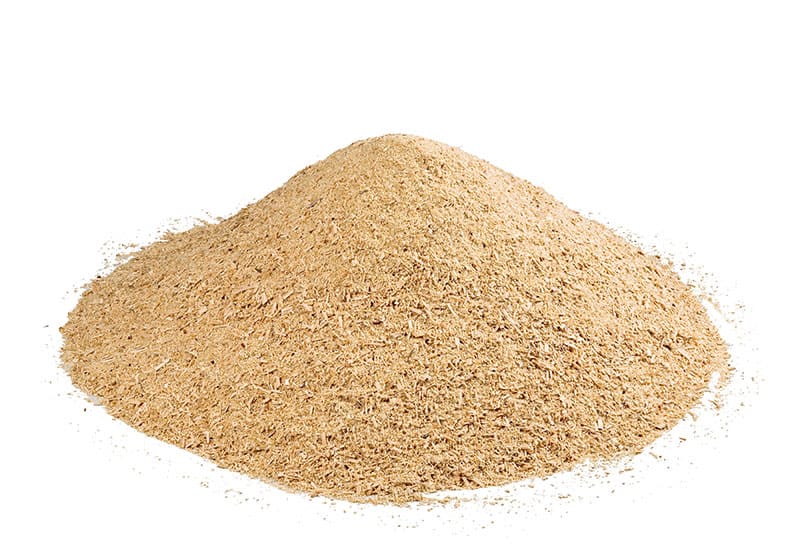
- Sawdust act as a filter and absorb fat. It is advisable to use them immediately, before the oil is absorbed and hardened.You need to apply small sawdust to the item and leave it for a few minutes, then you need to shake it off and wash the clothes. If the stain does not come off the first time, the procedure can be repeated several times. If the sawdust cannot completely absorb the oil, you can use ammonia, stain remover or red laundry soap when washing.
- Potato contains a lot of starch, which can absorb unpleasant odors, fat and other substances. In this regard, potatoes can be used to remove contaminants. To do this, you need to cut a fresh root vegetable in half and rub the dirty area on the cloth. This needs to be done for 2-3 minutes, after which you need to leave the item for a while so that it dries from the potato juice. After that you need her wash in the usual way.
- Shaving foam The composition contains alcohol, hydrated natural oils, mineral mass (base). These components disinfect, soften and remove fat. Apply a little foam to the dirt and wait a quarter of an hour, then wash it by hand with soap.
- Salt, soda, starch Great for removing stains from upholstered furniture. It is enough to rub the substances into the furniture, leave for 10 minutes and then collect with a vacuum cleaner or sweep with a brush. In addition to removing contaminants, salt and soda disinfect (colonies of pathogenic microorganisms often breed in furniture).
- Dry mustard used in the same way as starch. It works more effectively on fresh stains and is suitable for colored and dark things. You need to dilute a small amount of mustard with water to get a mushy mass. It must be applied to the fabric (rub into the stain) and after 10 minutes, rinse with plenty of water.To avoid unpleasant odor and yellowness, you need to wash the product in a machine.
In summary, it is important to note that oil stains are difficult to remove from fabrics, but it is possible. If you don’t succeed the first time, you can use another method, of which there are quite a few. It is important to first study the properties of the fabric and components that will be used to remove stains, so as not to spoil the product.







